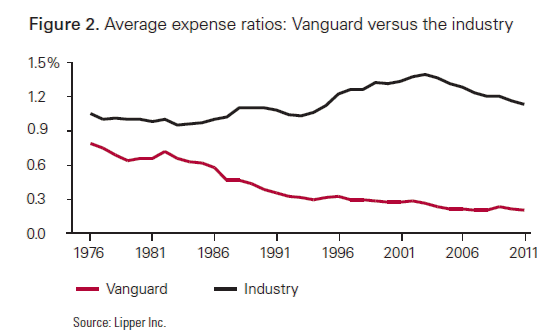Expense Ratio What is a Fund s Expense Ratio
Post on: 25 Июнь, 2015 No Comment

What is a fund’s expense ratio?
Expense ratio is the fee charged by the fund for managing the fund’s assets.
Investors will notice this fee on Mutual Funds and ETF (Exchange Traded Funds).
Shown below is how investors will see a typical ETF on Scottrade, however any broker or financial website will have this information:
The screenshots below come from SPY’s webpage, found here: https://www.spdrs.com/product/fund.seam?ticker=spy
First, look at the disclaimer on the Fund Objectives:
“…A fund that, before expenses, generally corresponds to the price and yield performance of the S&P 500 Index.”
This tells potential investors that the fund expects to match the performance of the S&P 500 index, however it will have expenses, represented by the expense ratio, which will cause it to underperform.
Two different expense ratios are shown above; Gross Expense Ratio and Net Expense Ratio. What is the difference?
The Gross Expense Ratio represents the percentage of assets of the fund used to run and manage the fund, before any fee waivers or reimbursements.
The Net Expense Ratio is what investors are ultimately charged to be invested in the fund after fee waivers, or reimbursements.
As we can see above, State Street (The “Trustee”) is currently waiving a portion of the expenses, in order to attract more investors into the fund. This explains the difference between SPYs Gross and Net Expense Ratio.
It is important for investors to know both expense ratios, because if the Gross Expense Ratio is significantly higher than the Net Expense Ratio, it may be a sign that the fund’s expense ratio may increase in the future. We can see above that SPY’s fee waiver is in effect until February 1 st. 2014. After that, the expense ratio may increase.
Many times, you may see a fund’s Gross Expense Ratio and Net Expense Ratio are the same.
So this expense ratio is not billed to you, how does the fund collect its fees? The fees are taken from the fund’s assets.
We can see on the fund’s webpage that SPY has $140 billion in assets. It will remove 0.0945% (the net expense ratio of SPY) of the assets each year to pay the fund managers and cover the fund’s other expenses.
This will be reflected in a drop in the fund’s reported Assets:
And will result in the Fund’s share price under performing the index it is tracking:
Notice how SPY (In Blue) has slightly underperformed the S&P 500 index (In Green)? This is due to the fund selling off assets in order to pay its managers and cover its expenses.
This is why finding funds with low expense ratios is so important. A fund with a higher expense ratio means that more of your money is going into the fund manager’s pocket, and less into actual investments.
We frequently feature funds with low expense ratios in our ‘Fund Spotlight Series ’, check it out for low-cost investing ideas.














